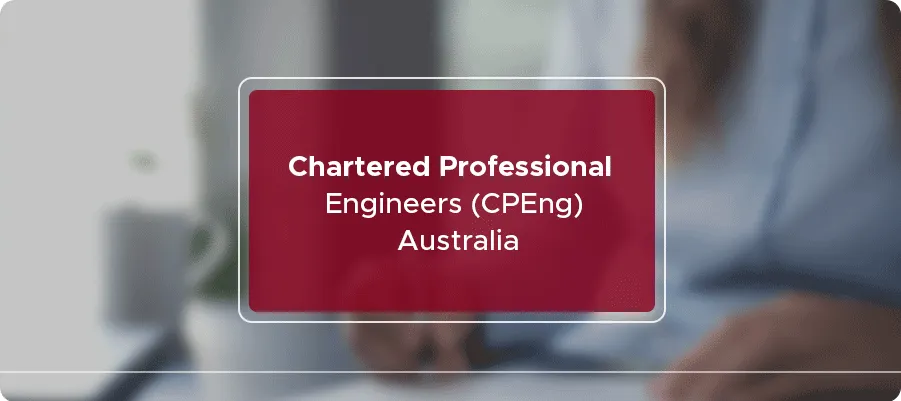
How does RPL assessment work for IT engineers in Australia?
Australia is a dream destination for many, known for its beautiful landscapes and abundant job opportunities. For IT engineers looking to migrate there, there’s a crucial process they need to follow: Recognition of Prior Learning (RPL).
About RPL Assessment
In today’s digital era, the demand for skilled IT professionals continues to grow, and Australia is no exception. Australia is a popular place for IT engineers because of its growing tech industry and good living standards.
But, to move to Australia as an IT engineer, you must meet specific requirements and need to check your skills and experiences. For this, you must have a Recognition of Prior Learning (RPL) assessment.
The RPL assessment checks the skills and knowledge of people who need formal qualifications. Instead, they have gained relevant skills and experience through work or other means. For IT engineers, it’s a pathway to show their expertise in the ICT field because of their practical experience. Also, they have a better shot at getting a visa to move to Australia.
Importance of RPL Assessment for IT Engineers
For many IT engineers looking to migrate to Australia, obtaining a formal ICT qualification may be challenging. But, their practical experience and skills acquired over years of work can still be valuable. RPL assessment is a fair way to test the skills and competencies of these professionals no matter their education. It allows IT engineers to prove that they have the necessary skills to succeed in the Australian ICT industry.
The RPL assessment identify the experience gained by IT engineers even if they don’t have formal qualifications. This acknowledgment lets them use their skills, helping out in the Australian job market, which is good for the IT field and the whole economy.
RPL Assessment Categories
To move to Australia as an IT professional, you can submit an RPL assessment in one of two categories during the migration process. These categories are as follows:

1. ICT Major
This category is for individuals who have a valid college degree in the field of technology that matches their job choice. Your degree should be from the past ten years. To apply, you must show your degree certificates and school records to prove your education.
To meet the ACS criteria, you need six years of professional experience as an ICT employee. Your field of employment must also be relevant to the nominated discipline ANZSCO code.
2. ICT Minor
This category is for individuals who do not hold a recognized tertiary ICT qualification. Applicants in this category must have at least six years of relevant work experience in their nominated occupation.
If you don’t have a college degree in technology but have worked in the field for at least eight years, you should show proof of your job experience. This category includes references and detailed descriptions of your work duties. But these extra two years can be something other than the applied ANZCSO code.
Learn More: Help prepare the RPL report for the ACS skills assessment. ⌛
Eligibility Criteria for RPL Assessment
Eligibility criteria for RPL assessment can vary depending on the specific educational institution. Yet, some standard eligibility criteria may include:
1. Age requirement
The applicant must be of a certain age to be eligible for RPL assessment.
2. Relevant experience
The applicant should have relevant work experience or practical experience in the related field.
3. Demonstrable skills and knowledge
The applicant must show they own the required skills and knowledge in the specific area for which they seek recognition.
4. Formal or informal learning
Recognition can cover both formal learning. For example, past education, courses, and informal learning, such as on-the-job training or self-study.
5. Evidence documentation
Applicants need to provide proof of their skills and knowledge through work samples or other relevant documents.
6. Language proficiency
In some RPL assessments, you might have to prove you can speak a specific language well if the assessment isn’t in your native language.
7. Entry requirements
Some RPL programs may have entry requirements for the qualification the applicant is looking to have.
8. Specific sector or industry requirements
Certain RPL assessments may have extra criteria specific to a particular sector or industry. Recognition can include stuff you learned, like in school or courses, on the job, or by studying independently.
Learn More: Australian Visa Options for Qualified Electrical Engineers. 🧑🏽✈️🏆
RPL Assessment Process
The RPL process may sound intimidating, but it’s manageable when broken down into several steps. Here’s how it works:
1. Self-Assessment
The journey starts with a self-assessment. IT engineers check their skills and experience, trying to match them with Australian standards. This self-reflection helps them identify where to provide evidence and show their competency.
2. Gathering Evidence
Once the self-assessment is complete, it’s time to gather evidence. This evidence takes various forms:
- Detailed Resume: Your resume should include your work history, job roles, responsibilities, and notable achievements.
- Reference Letters: Letters from past employers, supervisors, or colleagues that vouch for your skills.
- Job Descriptions: Detailed descriptions of the roles and responsibilities you’ve had in your IT career.
- Certifications: Any relevant certifications or courses you’ve completed.
- Project Documentation: Reports, plans, or other project-related documents show your involvement in real-world projects.
Collecting and organizing this evidence is crucial as it forms the basis of your RPL report.
3. Crafting the RPL Report
The RPL report is the heart of the assessment process. It consists of two essential parts:
a. Key Areas of Knowledge
This section focuses on your understanding of specific IT areas. It’s your chance to show your talent by explaining your roles, responsibilities, and how you’ve applied your skills.
This part might include discussions about your skills in programming languages. It includes skills like making software, working with networks, managing databases, etc. Be sure to prove how you know these areas and how you’ve used your knowledge.
b. Project Reports
The second part of the RPL report concentrates on project reports. These should show how you were part of real-world projects, proving you can use what you know to solve real problems.
Project reports need to talk about what the project wanted to do, what you did in it, any problems you faced, how you fixed them, and what happened in the end. The more specific and detailed your reports, the more convincing your RPL application will be.
Learn More: High-paying IT and ICT jobs in Australia: Your Gateway to Success. 🧑🏽✈️🏆
4. Submission
Once your RPL report is complete and you have all the necessary evidence, it’s time to submit your application. Most IT engineers submit applications to the assessing authority Australian Computer Society (ACS). The ACS will review your RPL report to determine if your skills and experience align with Australian standards.
Make sure to check the rules given by the assessing authority and make sure your RPL report follows those rules. Timely submission and adherence to these guidelines are vital for a smooth assessment process.
5. Assessment Outcome
After the assessment authority reviews your application, they will provide an assessment outcome. There are three possible outcomes:
- Positive Outcome
Your skills and experience get recognized, and you’re eligible for skilled migration to Australia.
- Outcome with More Requirements
Sometimes, you may need to fulfill extra requirements to meet Australian standards. These requirements could involve further study, taking exams, or other actions.
- Unsuccessful Outcome
If your RPL application meets the necessary standards, you’ll receive a successful outcome. In this case, it’s essential to understand the reasons behind the decision and consider options for improvement or alternative pathways.
Tips for a Successful RPL Assessment
Assessing the RPL assessment process requires careful planning and attention to detail. Here are some tips to increase your chances of a positive RPL assessment outcome:
1. Be Thorough
When you’re completing your RPL report, pay close attention to detail. Provide clear and concise information about your knowledge, skills, and projects. Address each key area of knowledge and provide specific examples.
2. Use English Language
Show your familiarity with the IT field by using industry-specific terminology and language. Using this language not only shows off what you know but also helps the people in charge understand your professional history better.
3. Use Professional Language
Write your RPL report in a professional and precise manner. Use proper grammar and spelling, and make sure your report is well-structured and easy to follow. Consider seeking professional help in writing and editing if needed.
4. Provide Evidence
Support your claims with concrete evidence. Include reference letters, project documentation, and other that confirm your experience and skills. The stronger your evidence, the more compelling your application will be.
5. Follow Guidelines
Stick to the guidelines provided by the assessing authority, such as the ACS. Check out yourself with their specific requirements and make sure your RPL report fits with their expectations.
6. Seek Professional Help
If you are not sure about RPL process or how to present your experience, consider asking guidance from experts in RPL assessments. They can provide valuable insights and help in creating a compelling RPL report.
Learn More: ACS Processing Time for RPL Report.⌛️⏱
Conclusion
The RPL assessment is a critical step for IT engineers migrating to Australia. It’s a practical way to prove their skills, ensuring they meet the requirements for skilled migration. By following the process and adhering to guidelines, IT engineers can increase their chances of a positive outcome.
If you need help with CDR or RPL reports and skill assessment, contact CDRReportWriters for support. Best of luck with your RPL assessment, and may your skills lead to a great career in Australia’s IT industry!





